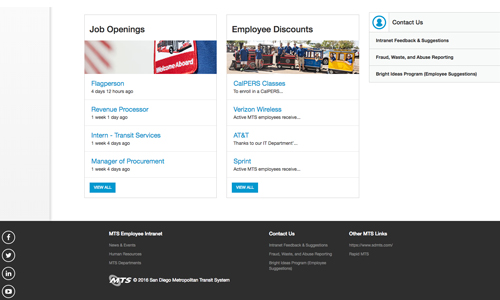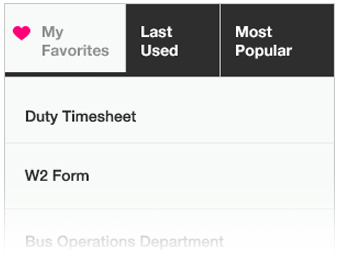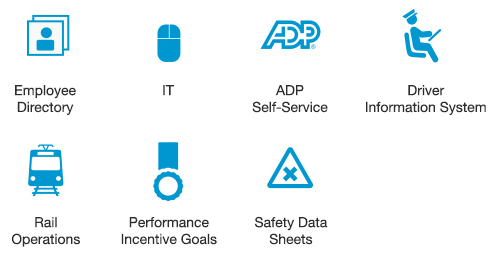You are here
In-Depth: Zero-Emission Bus Pilot Program
MTS will purchase six electric New Flyer buses as part of the agency’s Zero-Emission Bus Pilot Program
History was made at the MTS Board meeting in May.
The Board approved the purchase of six (6) 40-foot electric buses and nine (9) depot chargers.
This is the first purchase of fully electric buses in the history of MTS.
MTS has been aggressively helping San Diego and California reach climate action goals in many ways. Converting buses to clean-burning gas, constructing LEED-certified bus facilities, introducing eco-friendly propane-powered buses, operating a zero-emissions Trolley, and more have all contributed to lower carbon emissions in the environment.
The next phase is testing a zero-emissions bus fleet. At $884,000 each, electric buses are not cheap. And they require expensive recharging infrastructure. San Diego electricity ratepayers (including MTS) also pay one of the highest rates in the nation. But transit agencies throughout California will be mandated to convert fleets to zero-emissions and MTS is gearing up for the challenge.
The new buses will have a maximum run of 150-200 miles. With no gas-powered engine or exhaust, one of the primary conveniences passengers will notice right away is the quiet ride. For bus operators, many of the features will be the same.
“Many of the operations will be the same as other New Flyers, such as the steering wheel, driver’s seat and pedals,” said Kyle Whatley, MTS Zero Emission Bus Performance Analyst. “The biggest difference will be the dash system. It will have a different design, and will have an LCD screen showing the energy level of the bus.”
In addition to the operating elements being the same, bus operators won’t see any batteries. They will be enclosed on top of the bus and in the rear engine compartment.
But even though electric batteries will be out of view, operators and mechanics will need to adapt to new maintenance plans and have specific training.
“The maintenance program on an electric bus will be different in a lot of ways,” said Mike Wygant, MTS Bus Director of Fleet & Facility Maintenance. “Buses will have to sit on chargers for 4-5 hours every night. So instead of moving buses from station to station for nightly maintenance, it’s all flipped. We need to manage all the steps while buses sit in one location.”
“A lot of training will be needed because it’s a high voltage system,” added Wygant. “Battery management systems will be part of the new maintenance plan.”
When the first electric bus arrives at MTS in approximately mid-2019, training will begin immediately taking about two weeks for the other buses to arrive thereafter.
The buses will begin at IAD and periodically be moved to our other facilities including Kearny Mesa, South Bay and East County. MTS staff will collect information from bus performance and also get feedback from operators about driving capabilities.
Items that will be analyzed for the pilot:
Route vs. Depot Charging: Is it better for MTS buses to be charged mid-route or at a bus facility between shifts? It could be one method or a combination of both.
Climate: While the climate is fairly mild in San Diego, dog days of summer can get hot. How will operating in the heat impact the time between charges a bus will need?
Route Profiles: MTS bus routes navigate all kinds of topography. How will routes along hilly terrain (such as Route 6 or Route 44) impact the length of a battery charge?
Passenger Loads: What are the impacts to battery charges for large passenger loads on hilly terrains vs. smaller loads on flat terrains?
Operator Performance: Miles between battery charges can vary depending on the driving habits of a bus operator. Being heavy on the accelerator may diminish a battery charge even further and cut short revenue service time. Bus operator training will include braking techniques that demonstrate how to use the regenerative braking system to maximize the battery energy storage/range of the vehicles.
Battery Capacity: How will batteries perform with just a quick charge away from the operations facilities vs. a slow charge for 4-5 hours overnight?
It’s these questions and more that MTS will be studying when the New Flyer electric buses arrive next summer. The pilot will run for a period of two years. If all goes well, the next step would be full-deployment, taking MTS’ commitment to clean fuels to the next level.

 Employee Directory
Employee Directory IT Help Desk
IT Help Desk ADP Self-Service
ADP Self-Service Driver Information System
Driver Information System Bus Operations
Bus Operations Rail Operations
Rail Operations Performance Incentive Program
Performance Incentive Program Safety Data Sheets
Safety Data Sheets




